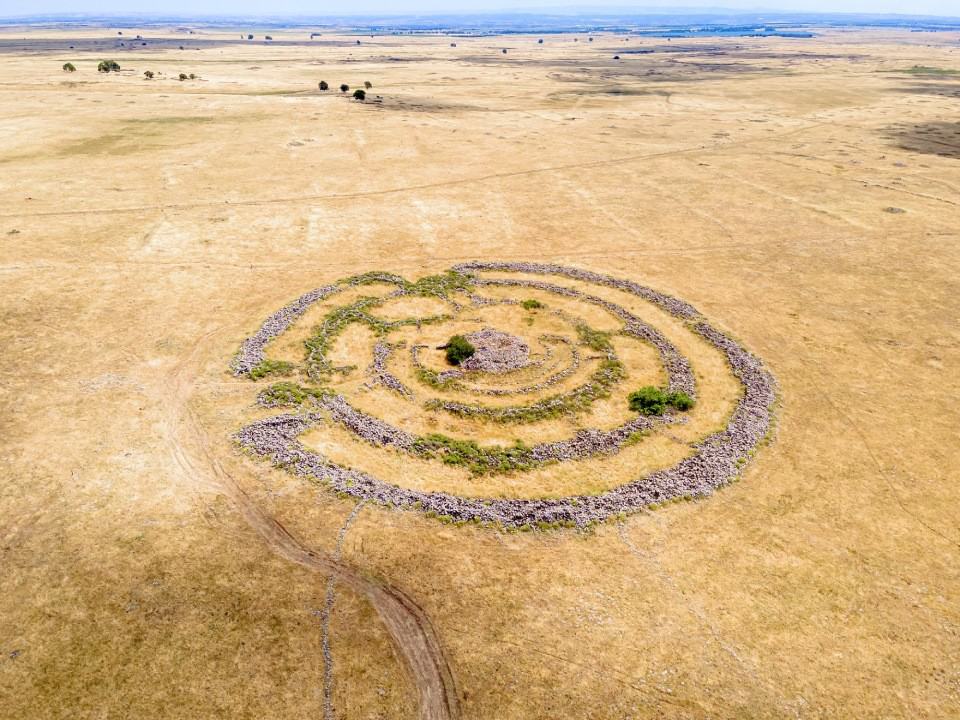Rujum al-Hiri is an ancient archaeological site in the Golan Heights. Despite the very few archaeological finds most scholars date the site to the Early Bronze Age II (3000 – 2700 BCE). The scarcity of finds also left archaeologists puzzled about the purpose of the site. Despite there is no real consensus about its function most suggest it was used for cultic rituals.

More About Rujum Al-Hiri
An aerial view of the site shows a large circle of basalt stones, inside which are smaller circles, some open and some closed. In the center of the circle is a stone mound, a dolmen, about 20 meters in diameter and approximately five meters high. The entire structure has more than 42,000 stones, which were brought to the site about 5,000 years ago. Apparently, the reason why the site is built of basalt stones is the accessibility of these in the Golan Heights. The builders had no difficulty carving the stones from nearby mountains and getting them to the site.

The Discovery of Rujum Al-Hiri
Rujum Al-Hiri is in the Golan Heights, so when it was under Syrian control the site was not considered important. After the six-day war, Israeli Archaeologists thoroughly surveyed the area and found among other things ancient synagogues, megalithic structures. Some ideas about what could be the purpose of the site have been suggested. For example, one theory suggests it was a burial site of some sort dated to the Bronze Age. The tomb that was found at Rujum Al-Hiri might suggest that. Another possibility is the site was used for sky burial as well.
Pagan Worship at Rujum Al-Hiri
According to the hypothesis currently accepted by a large part of scholars, the site served as a stage for special ritual ceremonies during the Bronze Age, on the longest and shortest day of the year. Apparently, about 5,000 years ago the first rays of the sun did penetrate on the longest day of the year through the opening in the northeastern gate. However, they did not enter at a perfect angle. Apparently, the worship was for the gods Asher and Tammuz, the gods of fertility, as giving thanks to them for a good harvest during the year. After the tomb was built in the center, about a thousand years later, the passage of light rays was blocked.

